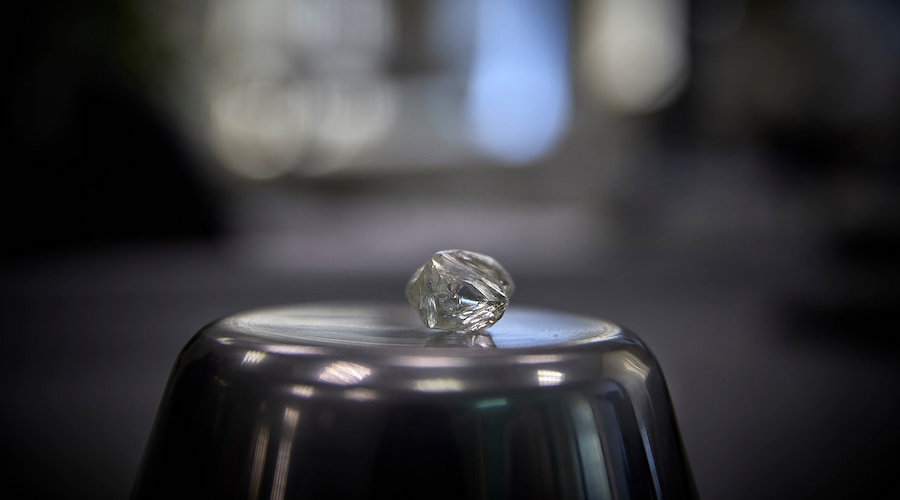
Russia’s Alrosa is talking to several global jewellery retailers about jointly marketing the miner’s jewellery brand that uses fluorescent diamonds, as it strives to create a new niche for the natural stones.
Diamond miners, which have long excelled at marketing, are seeking new approaches to battle falling demand and competition from diamonds manufactured in laboratories.
“We are completing talks with several major companies in different regions,” Alrosa Chief Executive Sergei Ivanov told Reuters.
The aim is to create a new market for stones with fluorescence, often a blueish glow visible under light, that are still considered by many traders as being of lower quality
Alrosa, which now sells these diamonds mixed with others in “lots”, expects the retailers to start offering its fluorescent stones in a year under the brand “Luminous Diamonds”, which it has recently created, in separate corners of their stores.
The aim is to create a new market for stones with fluorescence, often a blueish glow visible under light, that are still considered by many traders as being of lower quality.
Global demand for all types of diamonds has been hit by a trade war between the United States and China, the world’s two biggest diamond markets. Prices for smaller stones have fallen as deliberate output reductions have yet to remove oversupply.
Alrosa and its competitors, chiefly Anglo American’s De Beers, are betting on a “value over volume” strategy. Alrosa expects to produce 38.5 million carats in 2019 but will sell only 32 million to 33 million carats, stockpiling the rest until better days.
Alrosa does not disclose the names of the retailers it is talking to but says it has no plans to start its own retail business. Product sales will be organised by retailers via their own distribution chains.
“Our aim is to supply fluorescent polished diamonds – cut by Alrosa or its clients – to retailers and provide marketing support, including jewellery design if needed,” Ivanov said.
Fluorescence, a bluish glow produced by ultraviolet rays from a lamp or the sun, is a characteristic of 25% to 35% of diamonds, according to the Gemological Institute of America (GIA).
It is not bad for the precious stone, according to GIA, and it is not a grading factor like the traditional 4Cs — colour, clarity, cut and carat weight — used to determine quality.
About half of all diamonds produced globally have some fluorescence, while 3% to 10% have strong fluorescence, Ivanov said.
But such diamonds are more difficult to sell as many traders now consider stones with more fluorescence as lower quality, so they often trade at a 25% to 45% discount, even though they could demand a premium several decades ago, he said.
About half of all diamonds produced globally have some fluorescence, while 3% to 10% have strong fluorescence
With global annual rough diamond sales of $15 billion and diamond jewellery demand at $85 billion, any new marketing niche is attractive for the entire supply chain.
Diamond industry players have long been betting on “millennials”, born between the early 1980s and early 2000s, and “generation Z”, born from the mid-1990s to early 2000s, as drivers of growth in jewellery demand as their spending power rises.
Alrosa aims to woo this generation with florescent stones.
Recent research conducted by a consulting company for Alrosa in the United States and China showed millennials liked the stones for their unusual quality in jewellery, Ivanov said.
“We saw that it can become a fashionable product and interesting for these young people,” he said.
The same research also showed positive results among women, so the “Luminous Diamonds” brand sought to appeal to women’s independence and purchasing power, which was rising in the United States, China and India, the CEO added.
“It will be a special line. A diamond which glows in a night club, in a theatre or even in the rays of sun,” Ivanov said. “We see this demand in opinion polls and are sure that we will convert it into sales.”
(By Polina Devitt and Barbara Lewis; Editing by Edmund Blair)
Comments